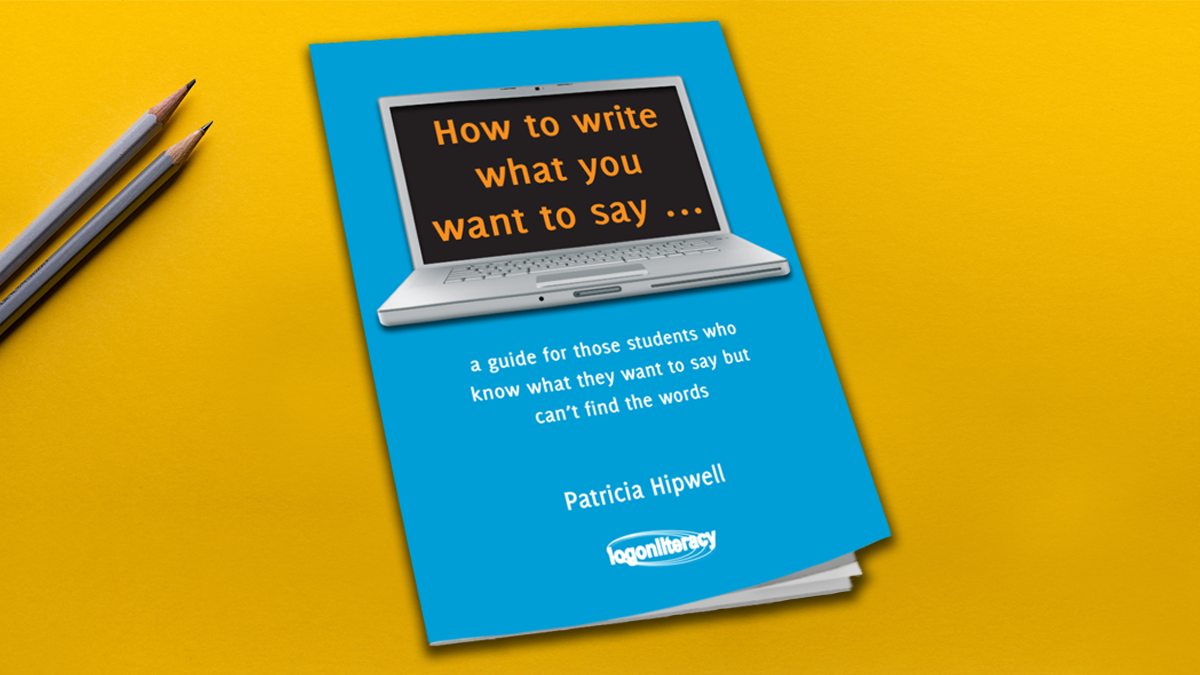
When it comes to writing an assignment, many students know what they want to say, but struggle with finding the right words to put their ideas down on paper.
It was watching her daughter Elizabeth tackle this problem, that lead to the creation of Pat’s first book, How to write what you want to say… Elizabeth was the very embodiment of the student who knew what she wanted to say but couldn’t always find the words. Having created a number of resources to assist students’ literacy development over the years, Pat created the guide to give students a starting point.
Language is the way that it is because of the job that it does and letting students into the secret of this makes a significant difference to the quality of the work they produce. This is why How to write what you want to say…. (or the Blue Book as it is often called) is built around the writing skills the student is to demonstrate.
The blue book dedicates two pages to each writing skill, providing sentence starters and key connectives for students to use when demonstrating a particular writing skill. There is also an example of the skill in a short piece of text and key task words linked to each skill.
Focus on the Writing Skills
These writing skills have been called key task words, task words and verbs, and cognitive verbs over the years, but whatever name they are called, they are common curriculum elements that should be very familiar to teachers and to students.
The first step in using the blue book is to check their assessment details to identify the writing skill they are supposed to be demonstrating. The words used to describe the assessment criteria may not exactly match the key writing skill listed the blue book, but a range of key task words are listed in each section and in the glossary to help students select the correct section.
Once the student has selected the correct section they can use the sentence starters and connecting words to flesh out their ideas into words.
As an example, a student asked to distinguish the difference between plant and animal cells, would turn to the Contrasting section of the guide. The sentence starters and connecting words used from the guide are highlighted below, with sentence starters in bold text and connecting words in italics.





